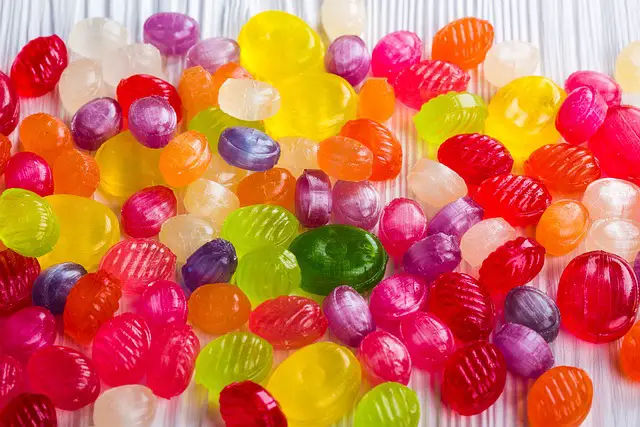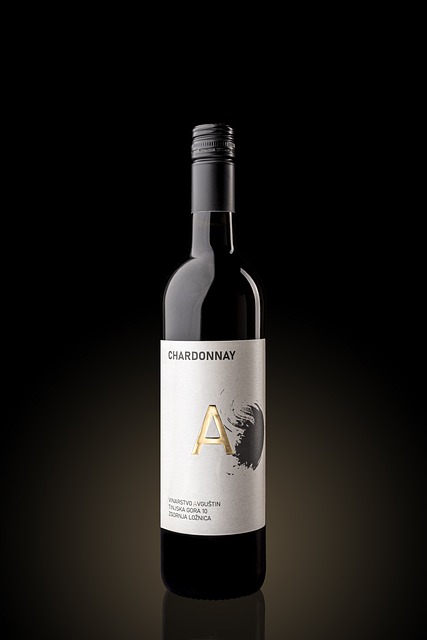If you’ve ever found yourself pondering between a bottle of Prosecco and one of Moscato, you might have wondered, “Which one is sweeter?” It’s a common question among wine enthusiasts and casual sippers alike. In this article, we’re going to settle the debate once and for all with a sweetness showdown between Prosecco and Moscato. So whether you have a sweet tooth or you’re simply curious about the differences in taste, join us as we explore the delightful world of these two popular sparkling wines. Get ready for a journey through fizzy bubbles and luscious flavors as we delve into the nuances of Prosecco and Moscato – and find out which one comes out on top in the sweetness department.
Obsah
- 1. A Comparison of Prosecco and Moscato: Unveiling the Sweetness Scale
- 2. Unraveling Prosecco’s Sweetness: An In-depth Analysis
- 3. Moscato’s Sweet Symphony: Exploring its Unique Flavor Profile
- 4. The Science Behind Sweetness: Understanding Sugar Residual and Bubbles
- 5. The Sweeter Choice: When to Opt for Prosecco or Moscato
- 6. Food Pairing Recommendations: Enhancing the Sweetness Experience
- 7. Debunking Myths: Dispelling Misconceptions about Prosecco and Moscato
- 8. Making the Sweet Decision: Personal Preferences and Final Thoughts
- Key Takeaways
1. A Comparison of Prosecco and Moscato: Unveiling the Sweetness Scale
Both Prosecco and Moscato are popular choices when it comes to sparkling wines, but it’s important to understand the differences between these two delightful varieties. While sweetness is a defining characteristic that sets them apart, it also plays a crucial role in determining the overall taste and experience. Let’s take a closer look at the sweetness scale of Prosecco and Moscato to help you make an informed decision for your next celebration or special occasion.
Prosecco:
- Prosecco is known for its light and crisp flavor profile.
- Typically, Prosecco falls on the dryer end of the sweetness scale, although sweeter varieties can also be found.
- Its sweetness level usually ranges from brut (dry) to extra dry, with very little residual sugars.
- Prosecco is an excellent choice for those who prefer a more refined, less sweet palate.
Moscato:
- Moscato is celebrated for its aromatic and fruity characteristics.
- Compared to Prosecco, Moscato tends to fall on the sweeter end of the scale.
- Its sweetness level ranges from semi-sweet to sweet, with noticeable residual sugars that contribute to its lush and rich taste.
- Moscato is a great option for wine lovers seeking a more pronounced sweetness and a touch of effervescence.
Understanding the sweetness scale of Prosecco and Moscato enables you to select the perfect sparkling wine to suit your taste preferences. Whether you favor the dry elegance of Prosecco or the sweet indulgence of Moscato, both options offer a delightful drinking experience. So, whether you’re toasting to a joyous occasion or simply savoring a glass of bubbly, there’s a sparkling wine out there to suit every palate.
2. Unraveling Prosecco’s Sweetness: An In-depth Analysis
When it comes to Prosecco, one of the key factors that captivates wine enthusiasts is its delightful sweetness. But what exactly contributes to this irresistible taste? Let’s delve into the fascinating world of Prosecco’s sweetness and uncover the secrets behind its unparalleled flavor profile.
1. Grape Variety: Prosecco is primarily made from Glera grapes, known for their naturally fruity and aromatic characteristics. These grapes strike the perfect balance between sweetness and acidity, resulting in a well-rounded flavor. Their vibrant notes of apple, pear, and white peach lend Prosecco its distinctively crisp and fruity taste that is both refreshing and indulgent.
2. Residual Sugar: During the winemaking process, the fermentation of Prosecco is stopped early, leaving a certain amount of residual sugar in the wine. This residual sugar is responsible for the sweetness and plays a crucial role in determining Prosecco’s classification. Extra brut Proseccos have less than 6 grams of sugar per liter, whereas brut styles contain less than 12 grams. Those seeking a slightly sweeter experience can opt for the extra dry category, which ranges from 12 to 17 grams, or the dry category with 17 to 32 grams of sugar per liter.
3. Aging: Unlike many other sparkling wines, Prosecco is typically consumed while it is young and fresh. This minimal aging process helps to preserve the natural sweetness of the grapes while maintaining the vibrant fruity flavors. By doing so, Prosecco captures the essence of its origin, making it a delightful and undeniably sweet choice for any occasion.
So, whether you prefer a drier or sweeter taste, Prosecco offers an impressive range of options to satisfy every palate. Its balanced sweetness, achieved through grape selection, residual sugar, and careful aging techniques, truly makes Prosecco a unique and captivating sparkling wine.
3. Moscato’s Sweet Symphony: Exploring its Unique Flavor Profile
Moscato, oh Moscato! In the world of wines, this delightful varietal is truly a symphony for the senses. Known for its unparalleled sweetness and aromatic qualities, Moscato has a flavor profile that sets it apart from other wines. Prepare to embark on a journey of taste as we delve into the unique characteristics that make Moscato so special.
1. Delicate yet pronounced aromas: Moscato greets your nose with an intoxicating bouquet of fragrances. From vibrant floral notes of jasmine and honeysuckle to the alluring scent of ripe peaches and juicy apricots, the aromas of Moscato tantalize even before the first sip.
2. Lively sweetness balanced with acidity: One of Moscato’s defining features is its sweetness. With each sip, your taste buds are enveloped in a deliciously sweet embrace. However, what makes Moscato unique is the perfect balance it strikes between sweetness and acidity. This harmony ensures that the sweetness is not overpowering but rather refreshingly vibrant, leaving a crisp and clean finish on your palate.
3. Fruit-forward flavors: Moscato is all about celebrating the natural flavors of the fruit. Its vibrant character explodes with juicy fruitiness. Succulent peach, luscious apricot, zesty citrus, and mouthwatering tropical fruits dance on your taste buds, creating a symphony of flavors that is simply irresistible.
4. Refreshing effervescence: Many Moscato wines possess a gentle effervescence that elevates the tasting experience. The delicate bubbles provide a playful texture, enhancing the fruity notes and lending a light, refreshing quality to the wine.
4. The Science Behind Sweetness: Understanding Sugar Residual and Bubbles
Sugar residual and bubbles are two key factors that contribute to the science behind sweetness in various food and drink products. Understanding the intricate relationship between these elements can help in unraveling the secrets behind flavor and texture.
Firstly, let’s delve into the notion of sugar residual. When it comes to the perception of sweetness, the level of residual sugar plays a significant role. Residual sugar refers to the amount of sugar that remains unfermented in a product, such as wine or soda. This unfermented sugar is responsible for giving a sweet taste to the final product. It’s important to note that different products have different sweetness thresholds, and the level of sugar residual directly influences the perceived sweetness. For example, a wine with high residual sugar will taste sweeter than a wine with low residual sugar. Hence, the control and understanding of sugar residual are crucial in determining the sweetness profile of a product.
Now, let’s move on to the fascinating world of bubbles. Bubbles, typically in the form of carbon dioxide gas, contribute to the sensory experience of many beverages. Carbonation affects the mouthfeel and taste perception, enhancing the overall enjoyment. The science behind bubbles lies in their ability to stimulate taste receptors and contribute to the perception of sweetness. When carbonation is present, it triggers a reaction in the taste buds that amplifies the sweetness sensation, making the product taste sweeter than it actually is. This explains why a sugary soda can taste even sweeter when it has more bubbles. Understanding the role of bubbles in sweetness allows manufacturers to carefully manipulate carbonation levels, striking the perfect balance between texture and flavor in their products.
5. The Sweeter Choice: When to Opt for Prosecco or Moscato
If you are a lover of sweet and bubbly wines, then you have probably come across the dilemma of choosing between Prosecco and Moscato. Both these sparkling wines have their unique characteristics that make them the perfect accompaniments for different occasions. Here, we’ll explore when it’s best to savor a glass of Prosecco or Moscato, so you can make the sweeter choice with confidence.
Prosecco:
- Prosecco is an Italian sparkling wine that originates from the Veneto region. It is made primarily from the Glera grape.
- This wine is known for its refreshing and crisp taste, with flavors of green apple, pear, and citrus.
- Prosecco’s acidity and lightness make it an excellent choice for a pre-dinner drink or aperitif. Its effervescence perfectly complements appetizers and can help cleanse the palate before a meal.
- It pairs well with lighter dishes such as salads, seafood, and white meats, allowing the flavors of the food to shine through.
Moscato:
- Moscato, also originating from Italy, is a sweet and slightly sparkling wine made from Muscat grapes.
- With its luscious aromas of apricot, peach, and orange blossom, Moscato is a delightful choice for those who enjoy a sweeter indulgence.
- This wine’s sweetness makes it a perfect match for desserts, pairing beautifully with fruity tarts, creamy cheesecakes, and even dark chocolate.
- Moscato also works well as a standalone drink, enjoyed on a sunny afternoon or as a celebratory toast.
Whether you prefer the crispness of Prosecco or the sweetness of Moscato, understanding the characteristics of each can help you select the perfect bottle for any occasion. So, raise your glass and enjoy a delightful sip of your preferred sweeter choice!
6. Food Pairing Recommendations: Enhancing the Sweetness Experience
Pairing the right food with your craving for something sweet can take your taste buds on a delightful journey. The key to enhancing your sweetness experience lies in finding complementary flavors that bring out the best in each other. Here are some delectable food pairing recommendations that will heighten your enjoyment of all things sweet:
- Dark Chocolate and Red Wine: Treat yourself to a divine combination of velvety dark chocolate and a rich, full-bodied red wine. The smooth, slightly bitter notes of dark chocolate perfectly complement the robust flavors of red wine, creating a truly decadent experience that will leave you craving for more.
- Citrus Fruits and Honey: Create a harmonious blend of tangy and sweet by pairing juicy citrus fruits like oranges or grapefruits with the golden goodness of honey. The refreshing acidity of the citrus balances the natural sweetness of honey, resulting in a refreshing and revitalizing treat.
- Vanilla Ice Cream and Warm Caramel Sauce: Indulge in a classic dessert combination that never fails to satisfy. The creamy, velvety texture of vanilla ice cream combined with the rich, buttery flavor of warm caramel sauce creates a sublime harmony of sweetness that will leave you in dessert heaven.
Immerse yourself in the world of sweetness and explore the endless possibilities of food pairing. From the rich and robust to the tangy and refreshing, these recommendations are sure to enhance your sweetness experience and leave you with a lasting taste sensation. Enjoy the journey, and let your taste buds guide you to new and exciting sweet combinations that will tantalize your palate!
7. Debunking Myths: Dispelling Misconceptions about Prosecco and Moscato
Prosecco and Moscato are two popular sparkling wines that have unfortunately fallen victim to various myths and misconceptions. Let’s separate fact from fiction and debunk some of the most common misconceptions about these delightful wines:
- Myth 1: Prosecco and Moscato are excessively sweet.
- Myth 2: Prosecco and Moscato are only suitable for desserts.
No, this is not entirely true. While it’s true that Moscato tends to have a sweeter profile due to its grape variety, not all Proseccos and Moscatos are overly sweet. They come in a range of styles, from dry to sweet, allowing you to find the perfect level of sweetness that suits your taste buds.
False! These wines make excellent choices both as an aperitif and a complement to a wide variety of dishes. Prosecco, with its crisp acidity and refreshing bubbles, pairs wonderfully with seafood, light pasta dishes, and even spicy foods. On the other hand, the fruitiness of Moscato complements cheeses, salads, and fruits beautifully, making it a versatile option for pairing with various courses.
8. Making the Sweet Decision: Personal Preferences and Final Thoughts
Making the ultimate sweet decision can be a daunting task, as personal preferences play a significant role in our cravings. With countless options available, it’s important to consider a few factors before satisfying our sweet tooth. Firstly, flavor plays a crucial role in our enjoyment, as certain tastes resonate differently with each person. Whether you prefer the classic sweetness of chocolate, the tangy punch of fruit flavors, or the delectable richness of caramel, there’s a sweet treat out there for everyone.
Another consideration when making the sweet decision is the texture. Some individuals enjoy the soft and gooey texture of a freshly baked cookie, while others prefer the crunchiness of a biscuit. Whether you fancy the chewiness of a gummy candy or the smooth creaminess of ice cream, the texture can greatly enhance your overall sweet experience.
- Consider trying a variety of sweet options to discover your personal flavor preferences.
- Experiment with different textures, such as crunchy, creamy, or chewy, to find what satisfies your taste buds.
- Seek recommendations from friends or family members who share similar tastes.
- Don’t be afraid to step out of your comfort zone and try something new.
Final thoughts on the sweet decision process ultimately depend on individual preferences and experiences. Remember that taste is subjective, and what may be irresistible to one person may not appeal to another. The key is to revel in the delight of exploring different sweet options and embracing the joy that comes with satisfying your cravings. So, go ahead and indulge in your favorite sugary treats, knowing that you’ve made a personalized choice based on your unique taste buds and preferences.
Key Takeaways
In conclusion, when comparing Prosecco and Moscato, it is evident that Moscato tends to be sweeter than Prosecco.











